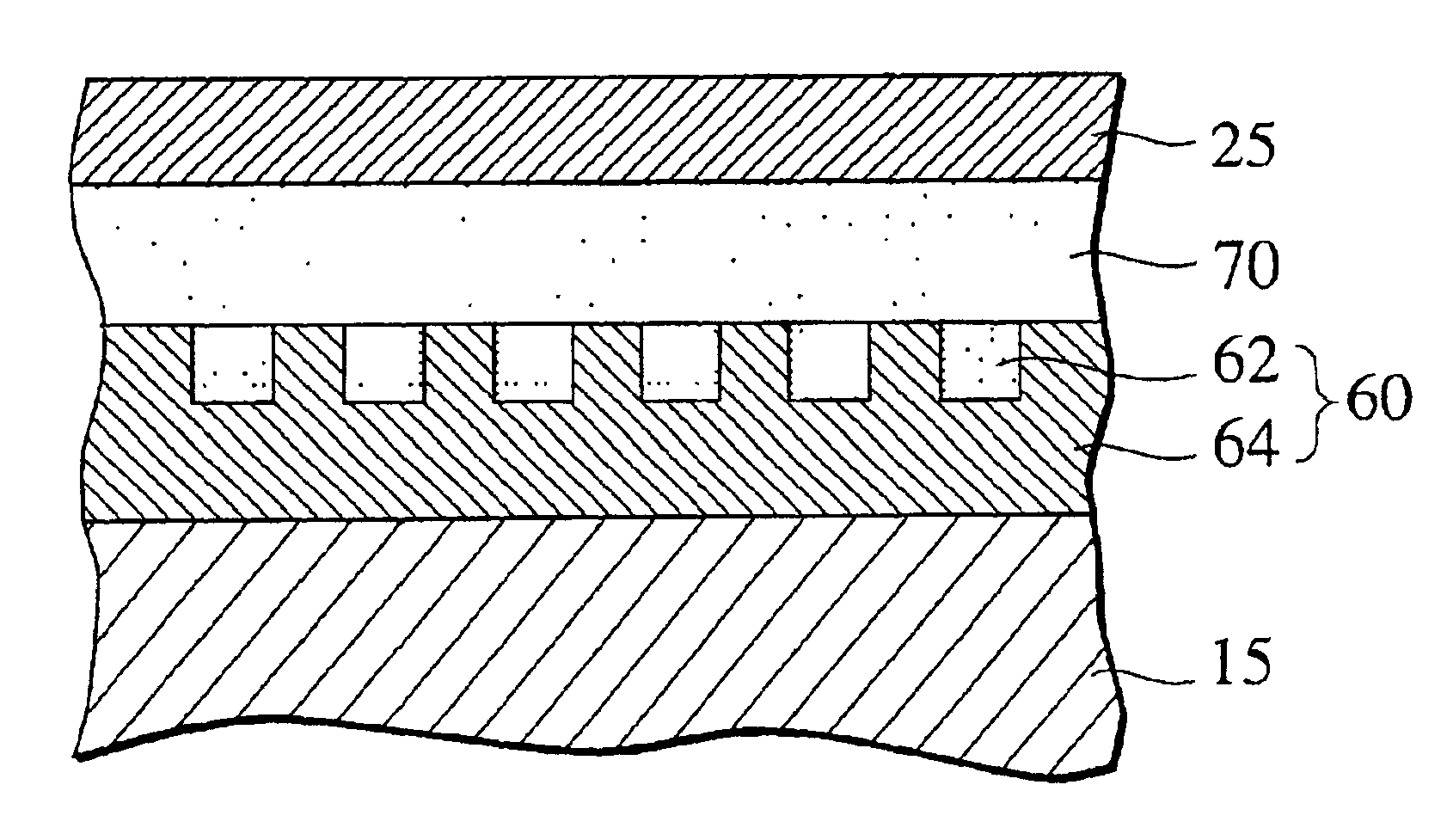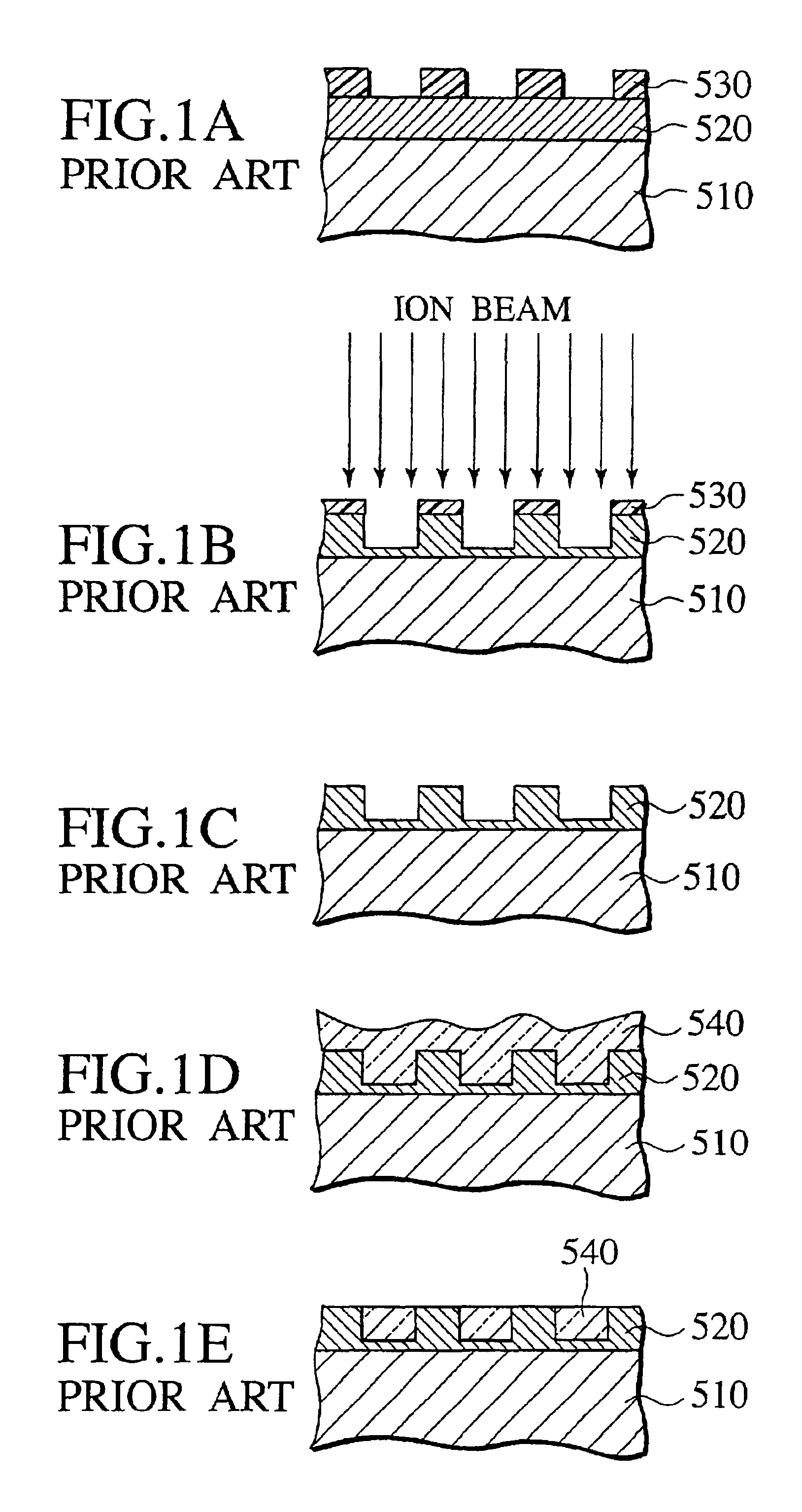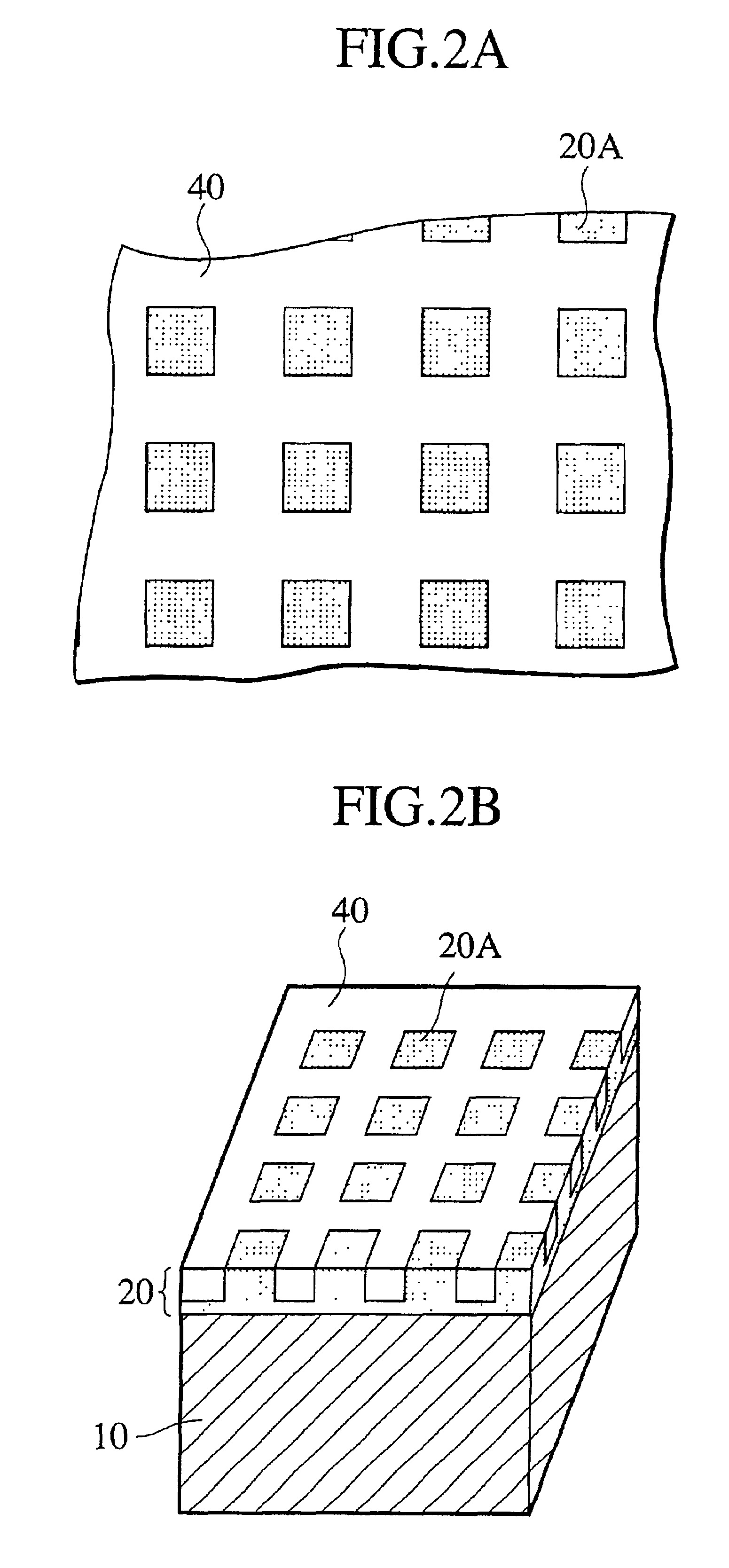Method of patterning magnetic products using chemical reactions
a magnetic product and chemical reaction technology, applied in the field of high-density magnetic recording technology, can solve the problems of reducing the quantity of magnetization per bit, limiting the resistance to thermal fluctuation, and loss of magnetization information, and achieve the effect of high integration
- Summary
- Abstract
- Description
- Claims
- Application Information
AI Technical Summary
Benefits of technology
Problems solved by technology
Method used
Image
Examples
example 1
[0086]First, CoPt was deposited by 20 nm on a Si substrate by a sputtering method, and a magnetic force microscope (MFM) image on a surface of this sample was observed. An image of a perpendicular magnetic recording medium having a high-contrast maze pattern which is a typical ferromagnetic pattern was observed. A hysteresis curve in a perpendicular direction was measured by a vibrating sample magnetometer (VSM), and a curve, as shown in FIG. 4A, which has a squareness ratio of 0.49 and a coercive force of 1500 Oe was obtained.
[0087]Then, a composition of the sample surface was analyzed by using X-ray photoelectron spectroscopy (XPS). A peak inherent in Co was observed at binding energy=778 eV. A peak (781 eV) of CoO was simultaneously observed; however, this peak was due to natural oxidation of oxygen in the atmosphere. Two peaks inherent in Pt were also observed within the range from 70 to 75 eV.
[0088]Subsequently, CoPt was deposited by 20 nm on the Si substrate by the sputtering ...
example 2
[0094]A patterned medium sample, in which ferromagnetic material CoPt regions are surrounded by antiferromagnetic material CoF2, was prepared. That is, first, CoPt was deposited by 20 nm on a Si substrate by a sputtering method. Then, resist was coated in a thickness of about 1.0 μm on this CoPt film by spin coating, and a resist pattern as shown in FIG. 5A was formed after batch exposure and development. In this example, a size of each ferromagnetic material region on a surface layer was set to 2.0 μm square.
[0095]A surface of this sample was exposed in F radicals generated under conditions similar to those of the example 1 for about 30 seconds while being maintained at room temperature. Then, the resist was removed by using an oxygen ashing apparatus.
[0096]When a MFM image of this sample was observed, a magnetic pattern equivalent to a resist pattern as shown in FIG. 5B was obtained. That is, regarding a region covered with a resist film, a MFM image of a ferromagnetic material ha...
example 3
[0099]In order to form finer patterns of the ferromagnetic material region than that of the above-described example 2, electron beam (EB) writing was carried out in exposure of resist. Accordingly, fine ferromagnetic material region patterns of about 80 nm square were formed. Other conditions were the same as those of the above example 2, and by using these conditions, a sample was prepared. That is, CoPt was deposited by 20 nm on a Si substrate by sputtering. Then, nega-resist was coated thereon, a minute resist pattern was formed by EB writing, and exposure thereof in F radicals was carried out for about 30 seconds at room temperature. Thereafter, the resist was removed.
[0100]An obtained sample was observed by MFM, and a single color image was obtained in a ferromagnetic material region. That is, it was verified that by reducing the ferromagnetic material region to a size of about 80 nm square, a single magnetic domain state was set in this region. When magnetic properties in a pe...
PUM
| Property | Measurement | Unit |
|---|---|---|
| depth | aaaaa | aaaaa |
| thickness | aaaaa | aaaaa |
| Neel temperatures | aaaaa | aaaaa |
Abstract
Description
Claims
Application Information
 Login to View More
Login to View More - R&D
- Intellectual Property
- Life Sciences
- Materials
- Tech Scout
- Unparalleled Data Quality
- Higher Quality Content
- 60% Fewer Hallucinations
Browse by: Latest US Patents, China's latest patents, Technical Efficacy Thesaurus, Application Domain, Technology Topic, Popular Technical Reports.
© 2025 PatSnap. All rights reserved.Legal|Privacy policy|Modern Slavery Act Transparency Statement|Sitemap|About US| Contact US: help@patsnap.com



